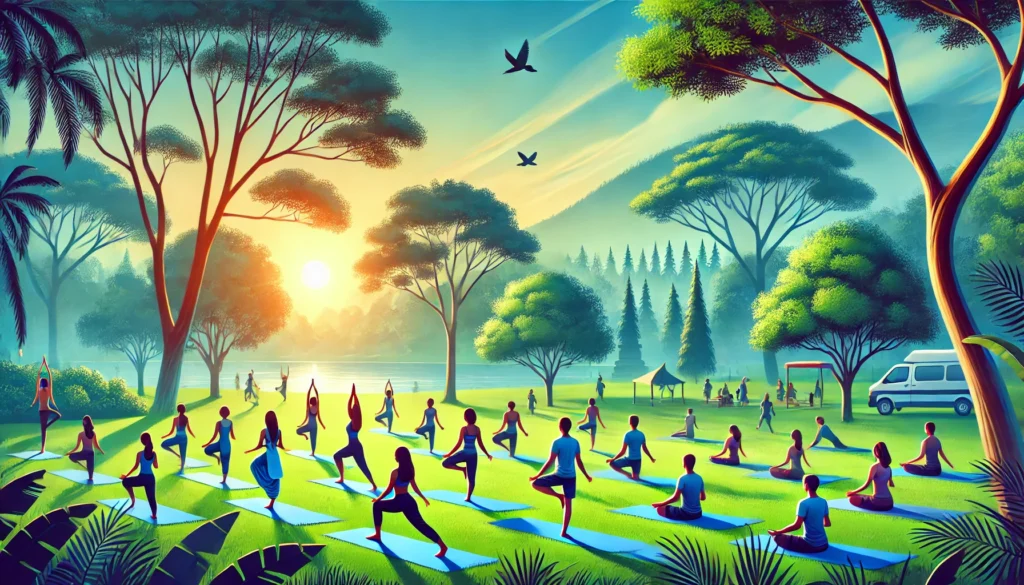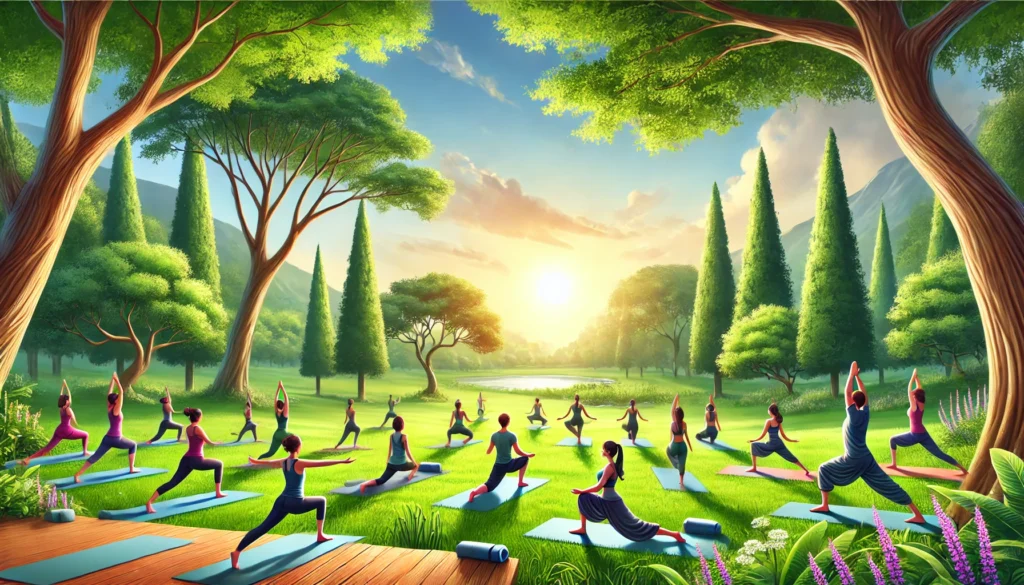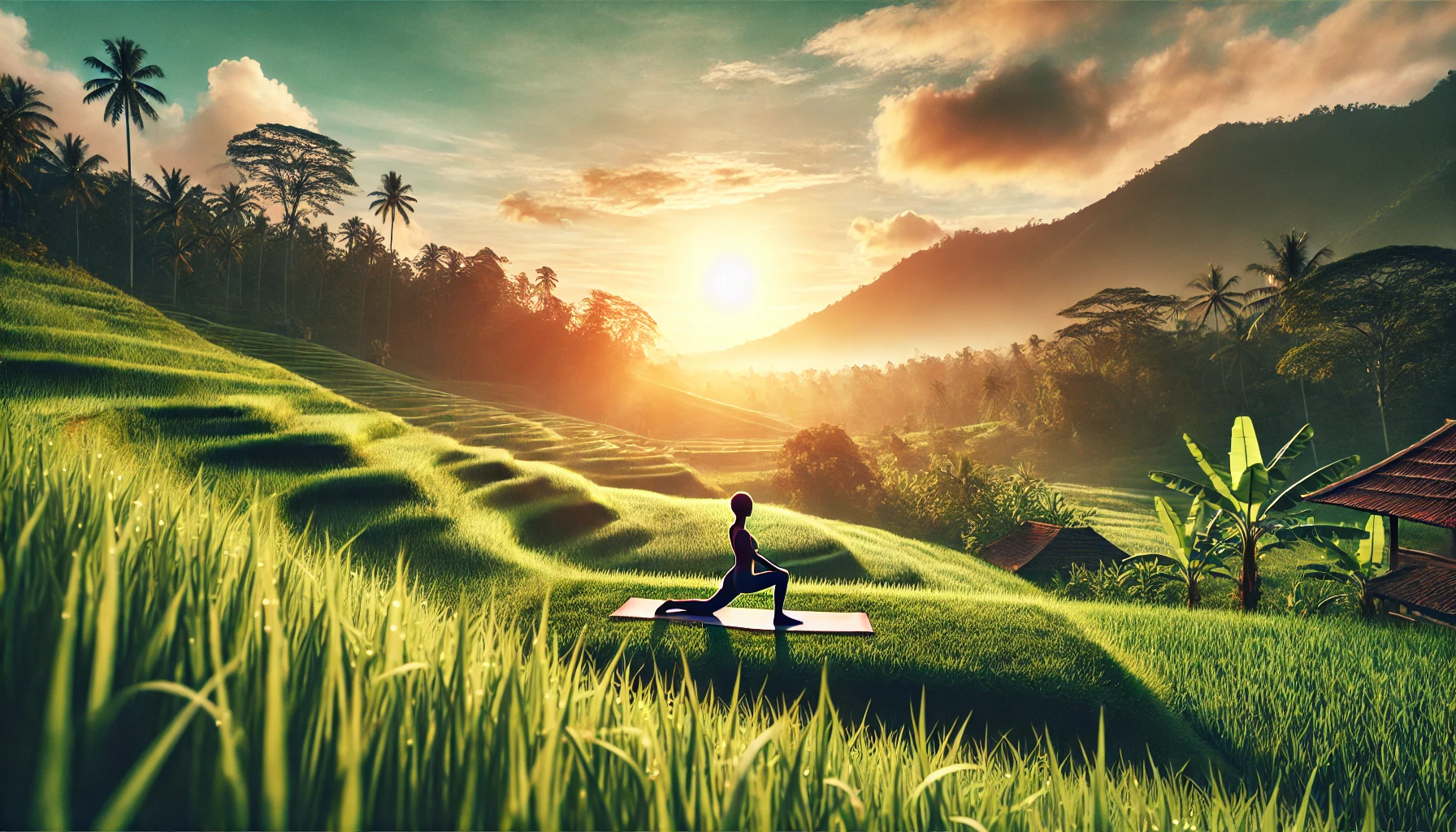Understanding Lifestyle Diseases
What Are Lifestyle Diseases?
Lifestyle Diseases are ailments that primarily arise from daily habits and an unhealthy lifestyle. These include conditions such as diabetes, hypertension, obesity, and cardiovascular diseases. Unlike infectious diseases, lifestyle diseases develop over time and are largely preventable. Yoga Asanas for Lifestyle Diseases can help you to address these.


Common Lifestyle Diseases
- Diabetes: A metabolic disorder characterized by high blood sugar levels.
- Hypertension: Also known as high blood pressure, a condition that increases the risk of heart diseases.
- Obesity: Excess body fat accumulation that poses health risks.
- Cardiovascular Diseases: A group of disorders affecting the heart and blood vessels.
The Role of Yoga in Managing Lifestyle Diseases
Benefits of Yoga Asanas for Lifestyle Diseases
Practicing yoga asanas for lifestyle diseases offers numerous benefits:
- Improves Flexibility: Regular practice enhances body flexibility.
- Reduces Stress: Yoga helps in calming the mind and reducing stress levels.
- Enhances Blood Circulation: Many yoga poses improve blood circulation and heart health.
- Promotes Weight Loss: Yoga aids in weight management by improving metabolism.


Top 10 Yoga Asanas for Lifestyle Diseases
1. Surya Namaskar (Sun Salutation)
Surya Namaskar is a comprehensive yoga sequence that involves a series of 12 poses.
Benefits
- Enhances cardiovascular health
- Improves flexibility and muscle strength
- Boosts mental health and reduces stress
How to Perform
- Stand at the edge of your mat, keep your feet together, and balance your weight equally on both feet.
- Expand your chest and relax your shoulders.
- Inhale, lift both arms up, and as you exhale, bring your palms together in a prayer position.
2. Tadasana (Mountain Pose)
Tadasana is a foundational yoga pose that promotes good posture.
Benefits
- Improves posture
- Strengthens thighs, knees, and ankles
- Increases awareness and focus
How to Perform
- Stand with your feet together, heels slightly apart.
- Lift and spread your toes and the balls of your feet, then lay them softly down.
- Balance your weight evenly on both feet.
3. Vrikshasana (Tree Pose)
Vrikshasana is a balancing pose that improves stability and concentration.
Benefits
- Enhances balance and stability
- Strengthens legs and spine
- Improves concentration and mental clarity
How to Perform
- Stand straight with your arms by your sides.
- Bend your right knee and place your right foot high up on your left thigh.
- Balance on your left leg and bring your hands in a prayer position in front of your chest.
4. Adho Mukha Svanasana (Downward-Facing Dog)
This pose is excellent for stretching the entire body.
Benefits
- Strengthens arms, shoulders, and legs
- Improves blood circulation
- Relieves stress and mild depression
How to Perform
- Start on your hands and knees.
- Lift your hips towards the ceiling, forming an inverted V shape with your body.
- Keep your hands shoulder-width apart and feet hip-width apart.
5. Setu Bandhasana (Bridge Pose)
Setu Bandhasana is beneficial for stretching the chest, neck, and spine.
Benefits
- Strengthens the back, buttocks, and hamstrings
- Improves blood circulation
- Reduces anxiety, stress, and depression
How to Perform
- Lie on your back with your knees bent and feet flat on the floor.
- Keep your arms at your sides with palms facing down.
- Lift your hips towards the ceiling, creating a bridge with your body.
6. Bhujangasana (Cobra Pose)
Bhujangasana is a rejuvenating backbend that stretches the spine.
Benefits
- Strengthens the spine
- Relieves stress and fatigue
- Opens up the chest and lungs
How to Perform
- Lie on your stomach with your legs straight.
- Place your hands under your shoulders and slowly lift your chest off the ground.
- Keep your elbows close to your body and gaze upwards.
7. Dhanurasana (Bow Pose)
Dhanurasana is a powerful backbend that tones the abdominal organs.
Benefits
- Strengthens the back and abdominal muscles
- Improves posture
- Stimulates the reproductive organs
How to Perform
- Lie on your stomach with your feet hip-width apart and your arms by your sides.
- Bend your knees and bring your heels towards your buttocks.
- Reach back and grab your ankles, then lift your chest and thighs off the ground.
8. Ardha Matsyendrasana (Half Lord of the Fishes Pose)
This seated twist is excellent for detoxifying the body.
Benefits
- Stimulates digestive fire
- Relieves menstrual discomfort
- Energizes the spine
How to Perform
- Sit with your legs extended.
- Bend your right knee and place your right foot on the outside of your left thigh.
- Twist your torso to the right and look over your right shoulder.
9. Shavasana (Corpse Pose)
Shavasana is a relaxation pose that calms the mind and body.
Benefits
- Reduces stress and anxiety
- Lowers blood pressure
- Promotes deep relaxation
How to Perform
- Lie flat on your back with your legs spread slightly apart.
- Let your arms rest by your sides with palms facing up.
- Close your eyes and breathe deeply, focusing on relaxation.
10. Anulom Vilom (Alternate Nostril Breathing)
Anulom Vilom is a pranayama technique that balances the body’s energy channels.
Benefits
- Improves respiratory function
- Reduces stress and anxiety
- Balances the nervous system
How to Perform
- Sit comfortably with your spine straight.
- Close your right nostril with your thumb and inhale deeply through your left nostril.
- Close your left nostril with your ring finger and exhale through your right nostril.
Conclusion
Incorporating these yoga asanas for lifestyle diseases into your daily routine can significantly improve your overall health and help manage lifestyle diseases. Remember, consistency is key, and it’s always best to consult with a healthcare professional before starting any new exercise regimen.
FAQs
While yoga can significantly improve and manage lifestyle diseases, it may not cure them entirely. It should be combined with a balanced diet and regular medical check-ups.
For best results, practice these yogasanas at least 3-5 times a week. Consistency is crucial for seeing improvements.
Yes, most of these poses are beginner-friendly. However, it’s essential to perform them correctly to avoid injuries. Consider taking a yoga class or consulting with a yoga instructor.
If you feel pain, stop immediately and consult with a healthcare professional. It’s essential to listen to your body and not push yourself too hard.
Always consult with your doctor before starting any new exercise routine, especially if you have a medical condition. Some poses may need to be modified to suit your needs.




